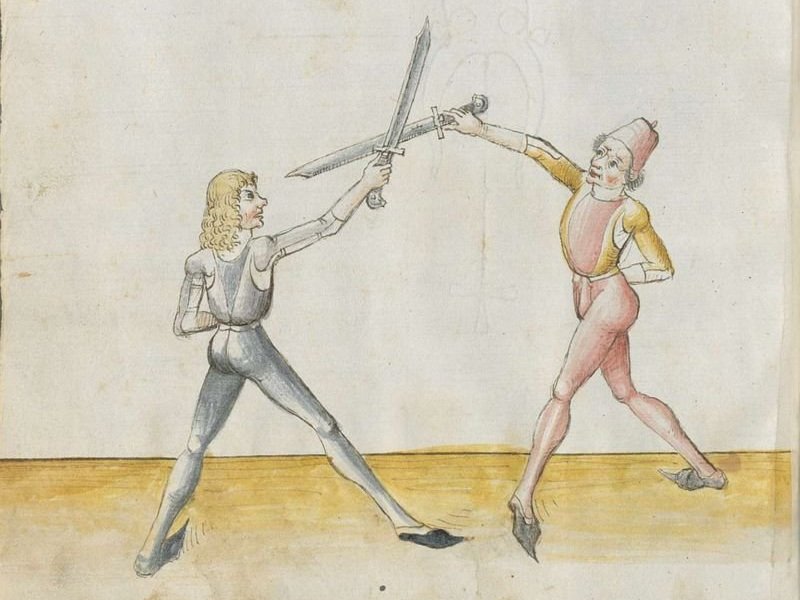What We Teach
A versatile two-handed weapon, suitable for strong thrusts and cutting actions. While sources from the Liechtenauer tradition are the most commonly studied, we also borrow techniques from the Italian masters, including Fiore, Vadi, and Marozzo.
A one-handed weapon typically lends itself to strong cutting, and high potential for grappling. Our study of messer techniques centers primarily around the work of Lecküchner and Talhoffer.
Featuring both the rondel dagger and Bowie knife, requiring close-range precision, and grappling techniques. We blend the classical “ringen” techniques with modern grappling systems like judo, BJJ, and folkstyle wrestling.
A one-handed weapon suitable for thrusts and cutting actions. Our fencers utilize techniques from a number of sources, ranging from Fabris and Capoferro to the Spanish system of Destreza.
A one-handed weapon suitable for both cuts and thrusts, typically utilizing strong blade control or grappling to secure a solid thrust. In addition to being practiced on its own, the sidesword is often paired with a buckler, targe, parrying dagger, or cloak.
A one-handed sword with a curved blade, typically featuring a protective bell-shaped guard or a simple knucklebow. Our club draws from a number of civilian and military saber styles, including English and Italian systems, as well as from living traditions such as Polish and Hungarian saber fencing.
Consisting of a one-handed sword and offhand buckler, drawing from both the Walpurgis Fechtbuch (I.33) and the Bolognese tradition.
Combinations of various one-handed weapons and offhand devices, including viking round shields, rotellas, parrying daggers, cloaks, or a second sword, as well as more exotic weapons.








